Apple iPhone XS Max 512GB detailed review
Apple iPhone XS Max: Everything to the MAX. Sort of
The iPhone XS Max was something that everyone expects. Leaksters in the industry had done their job well and by the time the launch event rolled around, we knew what the phone would look like and what kind of hardware it would have. What we didn’t know were the final details of everything that had gone into making the new iPhone XS Max. The phone’s price tag is high enough to cause most sane people to stop and think about what they’re about to do, so if you need convincing one way or the other, do read on.
A Bigger, but Familiar Design
The Apple iPhone XS Max feels like a mashup of the older iPhone X and the iPhone 8 Plus. This is because when you hold the iPhone XS Max, you get the feeling like you’re holding the older iPhone 8 Plus. The two phones are almost the same size, with the Max having 1mm from each of its dimensions. While the XS Max may have shed a few millimetres from its size, it has gained 6 additional grams of weight. The other way to look at the iPhone XS Max would be to think that Apple just made a bigger iPhone X, matching the dimensions of the iPhone 8 Plus. Either way, if you’ve been a user of Apple’s ‘Plus’ series smartphone, the iPhone XS Max would feel incredibly familiar in terms of heft and size.
What will feel different though is the phone against your hand. The iPhone XS Max uses the familiar glass-sandwich design, with the front and back panel being made from the “toughest glass” Apple has ever used. The stainless-steel frame feels incredibly posh and sometimes gives off the impression that this is the source of the added heft. On the back, you will also find the dual camera unit mounted vertically to the top left corner of the phone. The bottom has the Lightning port along with a speaker grille and the microphone array. On the right side of the frame is a large power button while the volume buttons and the silent switch lie on the left side of the frame. The glass panels blend beautifully into the metal frame, giving the phone a seamless feel.
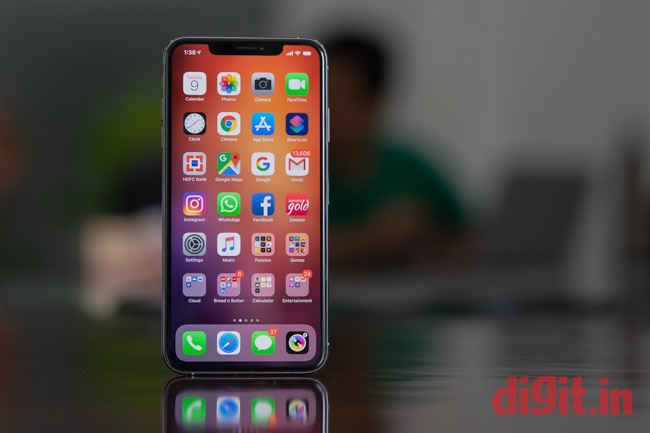
Apple has also improved the IP rating on the 2018 iPhones. The iPhone XS Max is now IP68 rated, with a special mention during the keynote for having been tested to withstand liquids other than just water. So we dunked our lakh and a half rupee review unit into water, coffee, Pepsi, and even Maazaa for 5 minutes each (15 minutes for water) and the iPhone XS Max continues to function perfectly fine. After washing the phone with water thoroughly and letting it dry (especially the ports), the phone has given us no trouble whatsoever. However, we wouldn’t want to test Apple’s claims of using the “hardest glass ever” because let’s face it, glass is glass and it can break.
Overall, the iPhone XS Max feels very much like the previous Plus models in ergonomics, but now, there are no wasteful bezels on the front. What you get is a 6.5-inch OLED panel, which we will talk about in the next section.
Display-par-none?
The Apple iPhone XS Max uses a Super AMOLED panel manufactured by Samsung and is one gorgeous display to look at. The 6.5-inch display sports a resolution of 1242x2688 giving the screen an effective pixel density of 458ppi. This time around, the display on the iPhone XS Max doesn’t just have an HDR10 certification but is also Dolby Vision certified. By the time review units made their way into our hands, Netflix had already pushed out an update to allow streaming of Dolby Vision enabled content onto the new iPhone XS Max.
The iPhone XS Max has a brilliant display that is pre-calibrated and it does fairly well at reproducing colours of the content that you may be watching on it. Moving to Netflix’s Dolby Vision enabled content, you discover new detail in existing content and in many cases, its quiet breath-taking. Shows like Star Trek Discovery and Altered Carbon looked absolutely mesmerising. The larger screen does make the viewing experience a lot better in comparison to the smaller iPhone XS, but that’s just a personal preference.
When out and about in the real world, the OLED panel on the iPhone XS Max manages to handle the harsh sun well. With a peak brightness of close to 750 nits, there’s no question about the screen being bright enough for use in bright light. What was even more impressive was the minimal reflectance. Unfortunately, if you’re going to go out and get a screen protector or a tempered glass screen put on the iPhone XS Max, do expect the reflectance to take a hit.
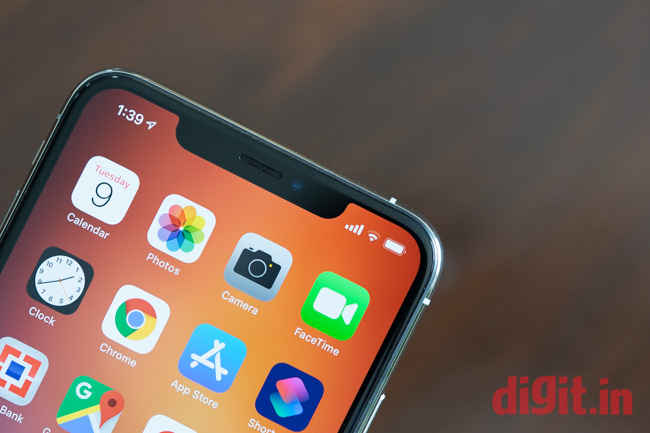
HDR and vibrancy aren’t the only tricks up the iPhone XS Max’s sleeve. The display now also has a 120Hz detection rate, meaning it registers even the minutest of finger touches. The panels also delivers an exceptionally smooth visual experience that is stutter free. This is honestly a display you wouldn’t want to put a screen protector on. Another thing I noticed while using the iPhone XS is that the display is not easily dirtied. IT doesn’t hold fingerprints like the Samsung Galaxy Note 9 or even the Google Pixel 2XL. I also noticed that in general, the oil from my skin didn’t really make any smears on the display. In the course of using the phone for over two weeks, the display has been cleaned only twice.
Now to address the elephant in the room; the notch. A trend blindly being followed by most Android OEMs has caused a lot of ill-will towards this design choice by Apple. Honestly, it isn’t too bad given that most content tends to get letter-boxed just below the notch. Any content that has to take up the whole screen ends up getting limited to the bottom edge of the notch, which might make some think that space above is being wasted, but thankfully, the notch serves a real purpose, which we will talk in a later section.
Overall, the display on the iPhone XS Max finally gives iPhone users what Android users have enjoyed for a few years now; a large screen, beautiful screen uninhibited by ugly bezels.
Face Unlock and The Notch: The end of TouchID
The notch is a universally ‘disliked’ design choice, but the reason for its presence differs greatly between the phone made by Apple and Android smartphones. While Apple used the notch to incorporate the host of sensors required to make faceID work, Android manufacturers used it to just add more “screen” to their phones. Samsung, ironically, is the only company that has stayed away from using a notch, instead preferring to embed all the sensors in a thin bar at the top.
Because of the notch, users are able to take advantage of two features; FaceID and portrait mode in selfies. Apple says that FaceID is now twice as fast as the one found on the iPhone X, and while I haven’t done a comparison, what I can definitely vouch for is the fact that it is fast. Regardless of whether I was trying to unlock the iPhone XS Max in bright daylight or pitch dark, it unlocked flawlessly. Unlike Samsung’s Iris/hybrid unlock which requires the phone to be lifted to eye-level, FaceID worked even when looking down at the phone, or while trying to unlock it from unconventional angles. Most importantly, it was fast enough to not even once make me miss the fingerprint sensor.
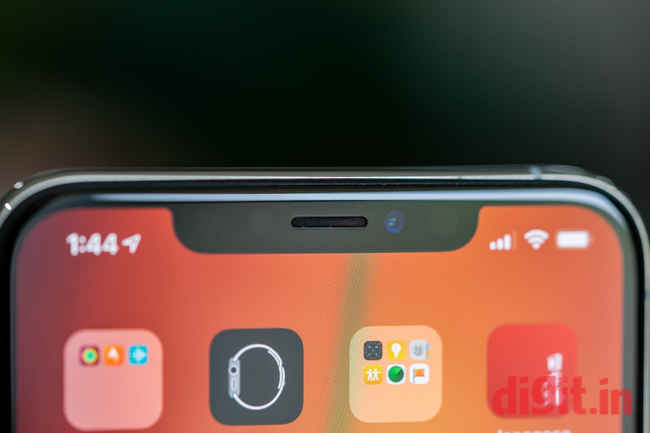
However, all is not peachy with the FaceID. On three different occasions, my sister was able to unlock the phone by pointing it at my face. The phone unlocked even before I could close my eyes shut (FaceID won’t unlock the phone if the eyes are shut). This makes me a little uncomfortable given how little control I ended up having in the situation. In fact, there was recently a report on how the FBI managed to force a suspect to unlock their iPhone using FaceID.
FaceID is definitely secure but requires the user to be aware that if someone was to hold the iPhone up to their face, they should quickly close their eyes so to not inadvertently unlock the phone, giving the other party full access to its contents.
Performance to the Max
The iPhone XS Max is powered by Apple’s new A12-Bionic chipset, which Phil Schiller claims is “the smartest, most powerful chip ever in a smartphone.” He may not be wrong, given that the A12-Bionic is manufactured using the 7nm process by TSMC, featuring a six-core design. There are 4 Tempest cores running at 1.59GHz (low-power cores) and 2 Vortex cores running at 2.5GHz (high-power cores). There’s 4GB of LPDDR4X RAM, a quad-core GPU and an octa-core NPU for all machine learning processing to take place in the phone itself. Apple has never been the one to chase large specification numbers unlike some Android OEMs as the performance of Apple’s hardware-software optimization has spoken for itself. With the A12-Bionic too, we see the chip outpace every Android phone in the market as of now. For example, the iPhone XS Max scored 4692 and 10997 in Geekbench 4’s Single and Multi-Core benchmarks, significantly higher than that of the Samsung Galaxy Note 9 and even the OnePlus 6. AnTuTu scores were similarly far ahead of the competition, scoring 314399 on the benchmark. You can see the graphs below for the benchmark numbers of popular flagship smartphones.
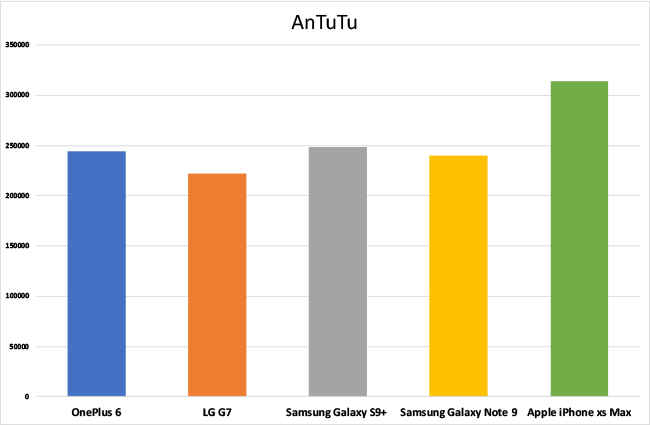
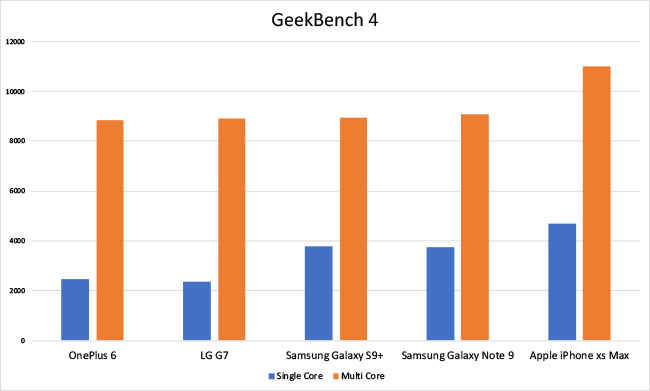
Saying that the new iPhone XS Max is fast is like saying water is wet. In day-to-day use, the smartphone operates butter smooth, with apps taking very little time to load up. Whether its editing RAW files in Adobe Lightroom or playing Asphalt 9, PUBG or Fortnite, everything just works without a glitch. Two weeks of using the iPhone XS Max and there hasn’t been a single app crash, and neither has there been any instance of slow down. It almost feels like the phone is on steroids, but there, its not just speed, but also neat and smooth animations. During heavy use, you can feel the phone heat up a little, but it isn’t anything out of the ordinary.
Going by the benchmark figures, this is hands down the fastest smartphone in the market. Going by real-life experience, this is definitely one of the fastest smartphones in the market today, hands down. Qualcomm now has a benchmark in performance it must meet for the next flagship SoC they launch.
Dual Camera, Portrait Mode and SmartHDR
We recently concluded an exhaustive comparison between the iPhone XS, the Google Pixel 2XL (Review) and the Samsung Galaxy Note 9’s (Review) cameras to see which of the three popular flagships offered the best smartphone camera. The iPhone won by just a hair, but it did show how far the new imaging setup has come.
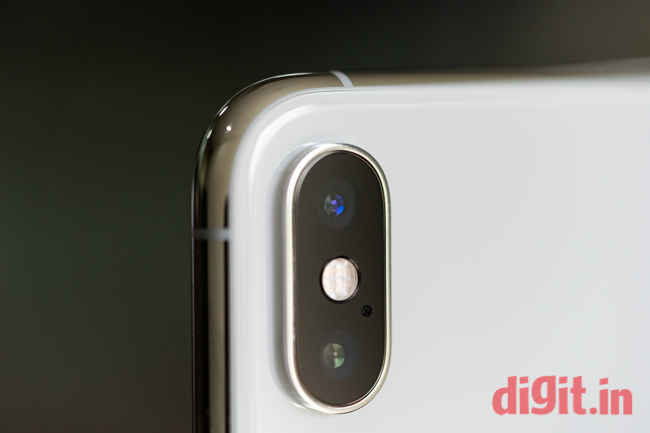
Featuring a 12+12 megapixel sensors on the back which sport 26mm f/1.8 and a 52mm f/2.4 lens with optical image stabilization, there may not appear to be much different. However, under the surface is where Apple has made a ton of improvements. For starters, Apple has increased the number of phase detect pixels on the sensor. This is supposed to theoretically improve the AF performance, something that was easily confirmed during out comparison. The iPhone XS Max managed to lock focus on 9 out of 10 situations, even those that were in the near-pitch dark.

ISO 1250, shutter speed: 1/17 second

ISO 320, Shutter Speed: 1/50 second

ISO 1600, Shutter Speed: 1/17 second
When it comes to quality of images, the iPhone XS Max takes its HDR algorithms to the next level with smart HDR. An HDR image is created by combining three photos of different exposures. What smartHDR does is shoot an additional inter-frame for each of the three frames, followed by blending information from all six frames to generate the final photo. The result is pretty impressive, but not perfect. The dynamic range of the final JPG images is definitely impressive, edging out both the Pixel 2XL and the Note 9. Unfortunately, the result of all this multi-frame blending is reduced localized contrast, which can make some images look a little flat. This is an easy fix though. You can use any editing app to boost the contrast. What is a little more problematic, however, is the iPhone’s tendency to favour a cooler white balance, especially in mixed lighting conditions.
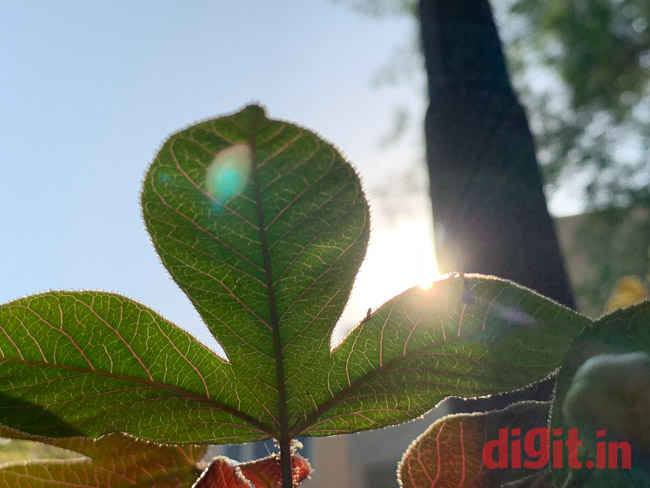

When shooting people, we see most of the iPhone XS Max’s cameras flaws melt away. The white balance is tuned to favour accurate skin tones (yes, Indian skin tones too), the detail is just about preserved, and the images come out sharp. When we go into Portrait Mode, we see the improvements Apple has made on the feature originally popularized by the iPhone 7 Plus. Apple said they have greatly improved their Portrait Mode by studying a dizzying number of professional camera and lens combinations. This claim, unfortunately, is more marketing speak than fact. Shooting in Portrait Mode is still sometimes frustrating as the mode continues to be riddled with limitations that you wouldn’t experience on an actual professional camera. Portrait mode still forces you to shoot within a specified distance. if you’re not within 2.5 meters of the subject, you’re not going to get the shot. This can be frustrating especially if you’re trying to shoot small objects and not just people. Also, results are just not that great in low light. Lastly, there seems to be some issue with the segmentation algorithm. All the photos we took from the iPhone XS Max in portrait mode showed uneven blurring on the top-side of our subject’s head. Portrait mode overall still needs work. It is a little surprising that even though Apple has had a year to work on their Portrait Mode algorithm since the Pixel 2XL came out, their results are still not a match for the Pixel.


You can see our 100+ collection of camera samples in our Flick Gallery
Selfie Camera on Steroids
Apple continues to use a modest 7-megapixel sensor along with a f/2.2 aperture lens for the front-facing camera, but this time, we also get optical image stabilization. Portrait mode is aided by the depth sensor that Apple uses for FaceID. Selfies are incredibly easy with the iPhone XS Max, provided you can get a grip on the phone. SmartHDR really helps make sure you get as much colour information from the scene into the photo, but sadly, it can’t work magic. The result of using smartHDR is that you end up losing some detail in the skin. This is because, in order to take so many shots in a single instant, the camera ramps up the ISO in order to facilitate a fast enough shutter speed. The result is noise from the high ISO so when the algorithm blends all the photos together, it also applies noise reduction which ends up killing some detail. There’s no beauty filter here. Don’t buy into the hype.
What is exciting about the camera is that its ability to shoot in portrait mode using actual depth sensing hardware, producing photos that don’t look like poorly photoshopped images.
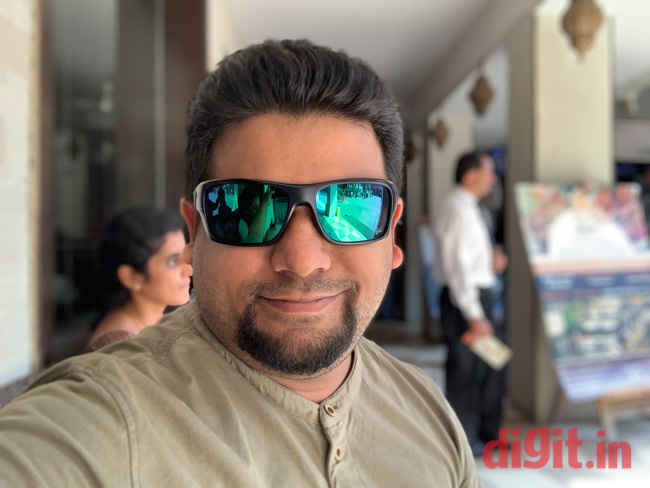
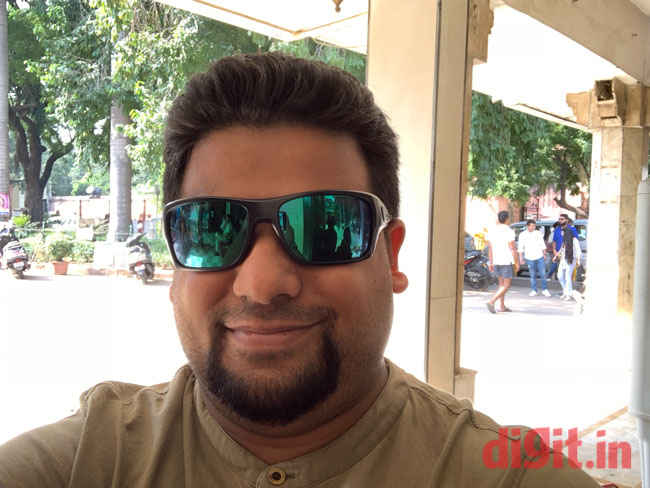
What is a little surprising about the iPhone XS Max’s camera is that for a smartphone this expensive, it still lacks an AF module? Samsung’s flagship smartphones have had an AF module on their front-facing cameras since the S8 series. This won't matter in most situations, but if you’re trying to compose your selfie in an unconventional way, then autofocus would have helped. Overall, the iPhone’s selfies are impressive and you wouldn’t be left feeling disappointed.
Battery Life
During the keynote, it was shared that the iPhone XS Max will give an hour and a half longer battery life in comparison to the iPhone X. Trust Apple to wax poetic and sway away from stating concrete numbers. They won't even reveal the battery capacity of the iPhone XS Max, which we have learned through various teardowns happens to be 3174 mAh. The capacity is definitely at the lower end of the spectrum for flagship smartphones, coming in second only to the LG G7+ with its 3000 mAh battery.
We used Geekbench 4’s battery test to determine how long the battery would last. The number we got in return was a rather short 5 hours and 52 minutes. In comparison, Samsung Galaxy Note 9 after running Geekbench 4’s battery test for the exact same amount of time still shows 38 percent battery as remaining. However, in real life usage as my primary device, the iPhone XS Max would easily last until the next day. The phone would get pulled off the charger every day at roughly 8 a.m. and would need to be charged again around noon the next day.
Charging the phone is now something very interesting to talk about. The new iPhone XS Max supports fast charging; however, you will need a separate charger and cable in order to do so. The charger in question has to be one that supports USB-PD standard, which is fairly easy to find. The trick is finding a USB-C to Lightning cable, which as of now only Apple makes. Thankfully, we have one with us and we tested the charge time of the iPhone XS Max using the regular and fast charge methods. On regular, the phone took about 2 hours to charge, however, using the Pixel 2XL’s USB-PD charger, and our USB-C to lightning cable, we topped the iPhone XS Max up from 0 to 100 percent in 1 hour and 29 minutes. The first thirty minutes saw the battery reach about 40 percent, and another 10 minutes, the phone’s battery was at 55 percent. From that point onwards, the charging started to slow down. We also tried to charge the iPhone XS Max using a certified Belkin wireless charger and walked away feeling like wireless charging is still nowhere close to being a viable option for topping up your phone in the hour of need.
Bottomline
The iPhone XS Max lives up to much of Apple’s marketing hype. It’s a phone with a really impressive processor, a class-leading display and incorporates all the features of a flagship smartphone. But is it worth the price tag? Honestly, in our scoring process, the iPhone XS Max scores a very low value for money score based on all the features and performance it offers. Many cheaper smartphones offer similar, if not better features. The Samsung Galaxy S9+ and the Galaxy Note 9 offer a similarly impressive display. The Note 9 even offers a 512GB storage variant, with the ability to further increase the storage via microSD card. The Google Pixel 2XL’s camera from last year is just a hair shy from being a better performance than the iPhone XS Max. As for sound and visuals, the LG G7 (Review) offers the same at a third of the price. For everything, the iPhone offers, another smartphone offers the same at a much cheaper price. Keeping this in mind, the iPhone XS Max, with its rather ambitious starting price of Rs 109990 for the 64GB variant and Rs 144990 for the 512GB variant is only meant for a very select audience. As good and flawless as the iPhone XS Max may be, at this point, you are paying more for the premium than you are for the features and performance.
[ad_2]
Source link

Post a Comment